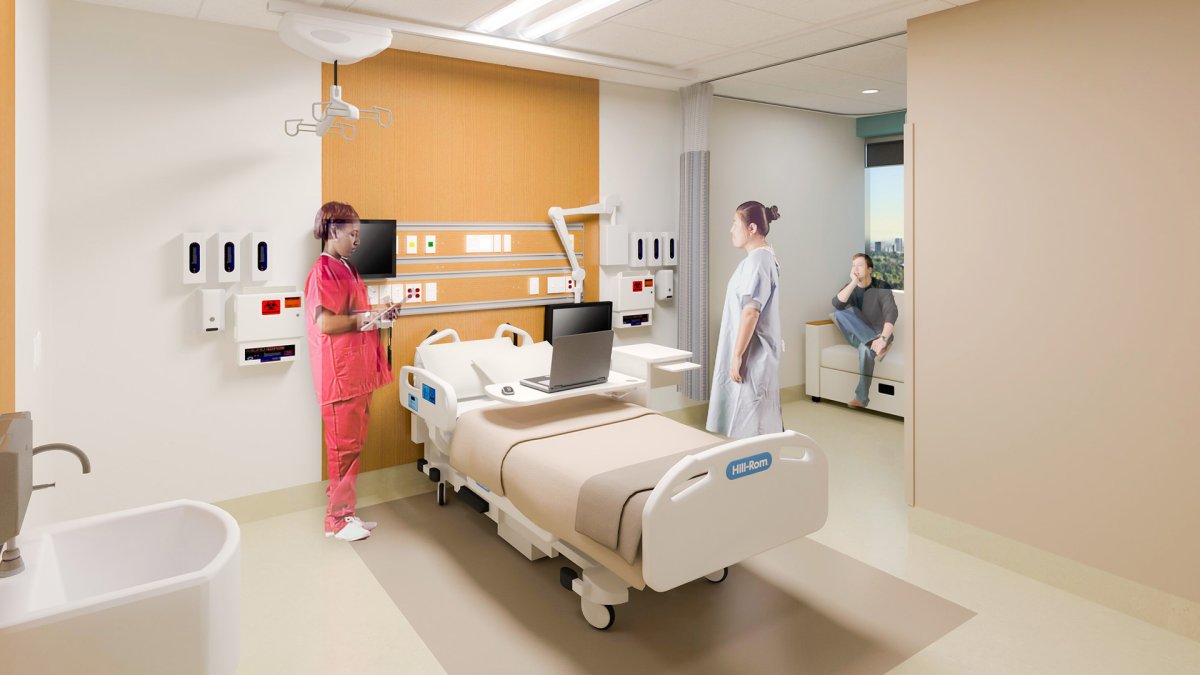Watch the video above: How hospital design can keep us healthier. Sean Mallen reports.

When Joyce Western’s mother needed to go into hospital, she had every reason to believe that she would be safe and well cared-for. At age 89, suffering from diabetes and unable to walk because of arthritis, Marjorie Howse was already frail. In May 2011, she contracted pneumonia in her long term care facility and was admitted to St. Catharines General Hospital—the same hospital the family had known and trusted all their lives.
What they did not know was that a deadly superbug called C. difficile was already hitting patients throughout the building. It was the early stages of an outbreak that was soon to devastate three hospitals in the Niagara Health system, infect dozens of people, and leave 37 dead.
Howse was assigned a room which she shared with another patient. Only 27 per cent of the rooms at the hospital were private, so it was not unusual. But it turned out that her roommate had C. difficile.
READ MORE: What is C. Difficile?
Her family knew little about the bug so thought nothing of it, but in retrospect Western is angry.
“I just don’t understand that kind of reasoning,” she said in an interview from her St. Catharines apartment.
Marjorie Howse contracted C. difficile and died less than a month later.
“I think it could have been prevented,” said Western.
It was not so long ago that private hospital rooms were considered a luxury. No more. The hard lessons of SARS and C. difficile outbreaks are now informing hospital design, with great care taken to minimize the risks of spreading infections.
Watch the video below: The argument for having 100 per cent private rooms in hospitals. Sean Mallen reports.
An expert in infection control, Dr. Michael Gardam of the University Health Networks, is a crusader for a new way of thinking
“The hospitals that we built in the 60s and 70s, nowadays we realized were designed to spread infections,” he said.
“Multi-bedded rooms, ICUs (intensive care units) where it’s just bed after bed after bed. The only thing separating patients were just curtains.”
Even the relatively new Munk Centre, adjacent to where Global News interviewed Gardam, has only 30 per cent private rooms. It was built only about a decade ago.
But now there is a new provincial standard. All new hospitals must have 80 per cent of the rooms designated for single-patients. The billion dollar Humber River Hospital, currently under construction in Downsview, is a shining example.
CEO and President of Humber River Hospital, Dr. Rueben Devlin, gave Global News a tour, detailing the many and varied design elements for controlling infections:
- The emergency room will have a separate entrance for potentially-contagious patients.
- Robots will be used to deliver supplies throughout the building.
- Clean linens and supplies will be scrupulously kept separate from those that are soiled.
- Even the windows will not have blinds, which can retain bacteria; instead there will be tinted glass.
“You only get a chance to design a hospital once and you have to put in safety measures,” said Dr. Devlin.
“We spent time doing that.”
He said he supports having 100 per cent of the rooms for individual patients, but believes hospital staff will be able to identify patients who are at no risk of spreading contagion and place them in shared rooms.
But one of the world’s leading experts in hospital design said anything less than 100 per cent is a mistake.
“Based on what we know, unfortunately, it implies a two-tiered system where some patients suffer a lower quality of care,” said Roger Ulrich, an American based in Sweden.
He said that while single-patient rooms cost close to 15 per cent more up front, the money is recouped within five years through averted illnesses.
Ulrich quoted a study conducted at Montreal’s McGill University Hospital which showed a 43 per cent reduction in transmission of C. difficile acquisition when the ICU was converted to 100 per cent single rooms.
“It’s good for everyone, a major win-win,” said Ulrich in a skype interview from his home in Helsingborg.
“It saves a lot of money and it saves patient lives.”
The words “two-tier health care” are politically radioactive in Ontario. Confronted with Ulrich’s assessment, Health Minister Deb Matthews would not rule out moving to a 100 per cent standard.
“We take it very seriously. We’d follow the science on that,” she told Global News outside the provincial cabinet office at Queen’s Park.
But Dr. Michael Gardam says the science is already clear: every new hospital room should be private.
“We just have to keeping thinking of this from the patient perspective. This is not something that I really want us to be skimping on,” he said.
The old St. Catharines General Hospital where Marjorie Howse contracted C. difficile closed last March, replaced by a shiny new facility, one that has 80 per cent private rooms. Joyce Western can see the building from the window of her apartment. Had it been open in 2011, her mother most likely would not have had to share a room with an infected patient.
We asked her whether she had considered that prospect. She took a deep breath.
“It might have been a different story.”





Comments